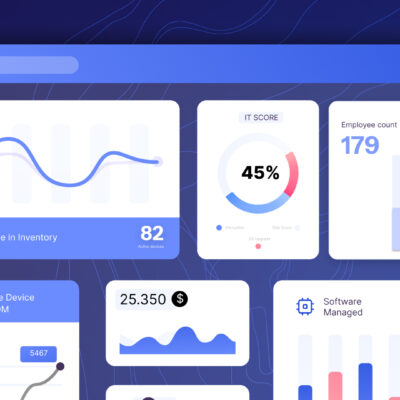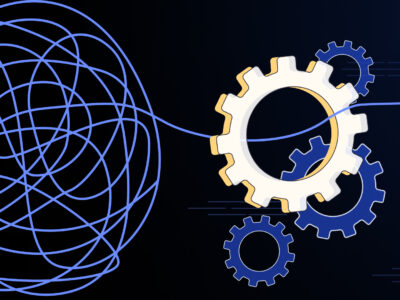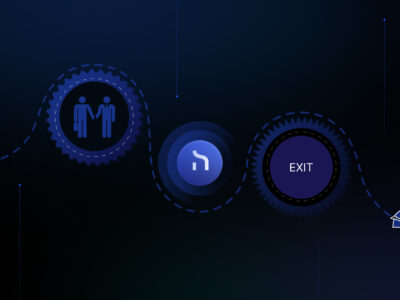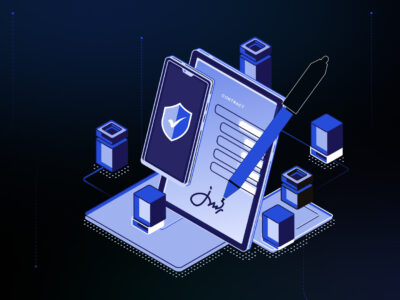A Complete Guide to Effective Device Lifecycle Management
From a newly purchased laptop to a device you need to dispose of, every device in your fleet goes through its usual lifecycle. Every stage in that lifecycle requires special treatment to maximise the lifespan and functionality of your devices. Effective device lifecycle management helps you save costs, secure data, and boost uptime.
In this comprehensive guide, we will explore device lifecycle management, its importance, key stages, best practices, and tools to help you streamline the process.
What is Device Lifecycle Management?
Device Lifecycle Management (DLM) is the strategic management of all stages of a device’s existence, from procurement to retirement. Your IT inventory may include diverse devices such as desktop computers, laptops, smartphones, tablets, IoT devices, etc. Device Lifecycle Management ensures efficient usage of these devices to minimise costs and security risks and to extend the lifespan while maximising their performance.
The Importance of Device Lifecycle Management
Effective device lifecycle management offers several benefits to businesses as below:
- Cost Control: Properly managing devices throughout their lifecycle helps reduce unnecessary expenditures by optimising their usage and extending their operational life.
- Security: Regular updates and patches are essential to protect devices from vulnerabilities. You can minimise risks by keeping devices up-to-date and phasing out older, unsupported devices.
- Efficiency: Devices that are well-maintained and up-to-date are more efficient, leading to increased employee productivity and less downtime.
- Compliance: For businesses, DLM is crucial for meeting regulatory and compliance requirements in various industries, ensuring data protection and privacy.
- Sustainability: Responsible device lifecycle management includes environmentally friendly practices, such as recycling and reducing e-waste, contributing to a greener environment.
Read 6 Sure-shot Tips To Keep the Devices in Your Fleet Healthy and Optimised.
Stages of Device Lifecycle Management
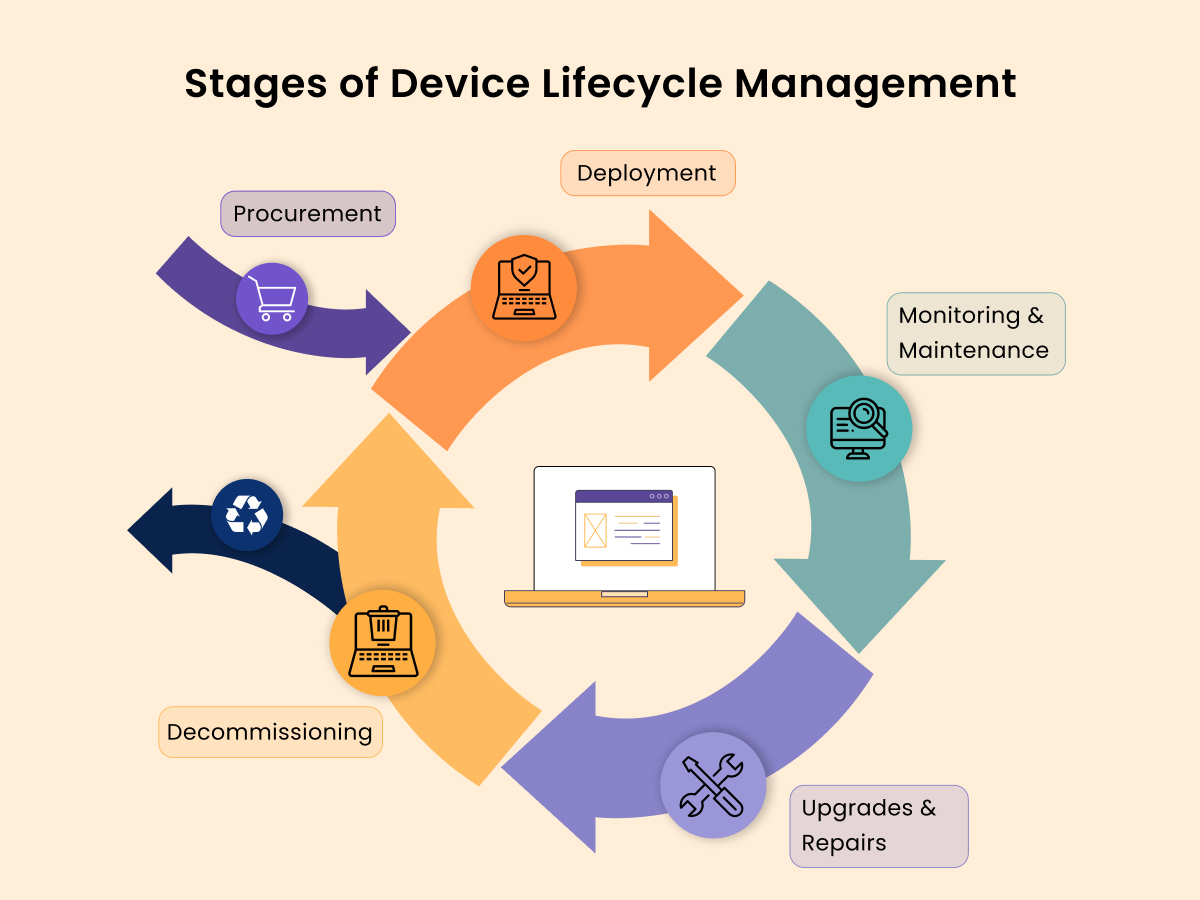
- Procurement: The process begins with acquiring new devices. This stage involves selecting suitable devices, negotiating contracts, and ensuring they meet the requirements of your organisation. The procurement process also entails shipping the devices to your employees without hassle.
- Deployment: Devices need to be configured and deployed after procurement. Remote configuration includes installing necessary tools and software, setting up security requirements, creating user accounts, and ensuring that devices are ready for use.
- Monitoring and Maintenance: Regularly monitoring and maintaining devices is crucial. This stage involves tracking hardware and software performance, applying updates and patches, and addressing hardware issues promptly.
- Upgrades and Repairs: As devices age, they may require upgrades or repairs. A good Device Lifecycle Management solution must allow you to strategically decide when to invest in upgrades or repairs and when it is more cost-effective to replace a device.
- Decommissioning: You need to securely decommission devices when devices reach the end of their useful life. Decommissioning involves data wiping, ensuring data privacy, and environmentally responsible disposal. Undoubtedly, this process should be secure and eco-friendly.
Best Practices for Effectively Managing Asset Lifecycle
If you don’t have a Device Lifecycle Management platform, here are some tips to effectively manage your fleet:
- Have a Comprehensive Device Inventory: Maintain a comprehensive list of all devices, including their specifications, purchase date, warranty status, and users assigned to them.
- Standardise Hardware and Software: Standardising your device configurations and software choices simplifies management, reduces compatibility issues, and streamlines support.
- Develop a Replacement Plan: Develop a thorough plan for when and how devices will be replaced or upgraded based on their lifecycle and business needs.
- Regular Maintenance Schedules: Implement a regular maintenance schedule, including software updates, patches, and hardware checks. With a DLM platform, you can do this remotely without any hassle.
- Data Backup and Security Measure: A periodic and systematic backup process is mandatory for protecting sensitive information. Use encryption and other security measures to safeguard data.
- Secure IT Asset Disposition Strategy: Safe disposition of devices is essential to protect company data and avoid potential data breaches. You need to develop an effective disposition strategy that includes data wiping, degaussing, recycling or physical destruction of devices.
- Budgeting: Include device lifecycle management costs in your budget planning, accounting for procurement, maintenance, and disposal expenses.
Optimise Your IT Costs with ZenAdmin’s Device Lifecycle Management Platform
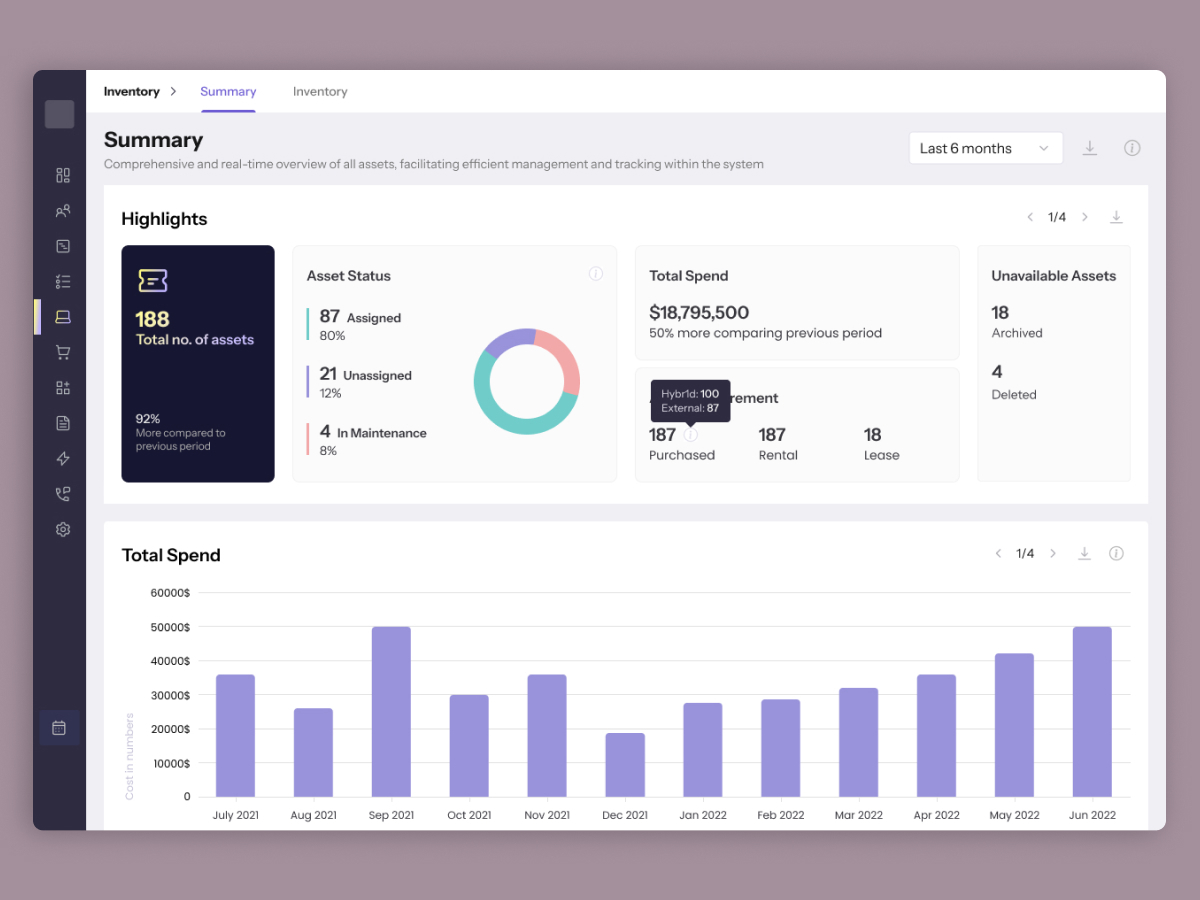
ZenAdmin’s Device Lifecycle Management module allows you to optimise the usage of your organisation’s IT devices through effective planning, procurement, provisioning, maintenance, and disposition. You can do all this remotely from a single system!
An end-to-end IT asset management platform: Manage everything from device procurement, provisioning, SaaS management, security, mobile device management, and IT support to disposition from a single dashboard. Easy, streamlined and cost-effective device management!
Purchase devices from leading brands & ship them globally: Choose laptops, extended warranties, monitors, headsets etc. from 10+ brands such as Apple, Microsoft, Lenovo, Dell, HP, etc. You can ship the devices to 150+ countries with a few clicks & track them effortlessly.
Empower your employees with work-ready devices: Instantly equip your new hires with the required devices, no matter where they are! Combined with an MDM, ZenAdmin empowers you with Zero Touch Deployment, and you can remotely set up the devices with apps, tools, software and accesses with ease.
Remotely monitor device status, history and health: Easily track device details, warranty status, location, and allocation history from ZenAdmin’s inventory dashboard. Get complete visibility into your assets’ health, including battery capacity, app usage, processor speed, RAM, etc.
Repair, refurbish or dispose of the used devices: With our ITAD, you can clean, refurbish, store or resell your used devices. You decide what to do with the device, and we do it in an eco-friendly and hassle-free manner!
Make informed decisions with IT analytics: Get comprehensive reports on device status, assigned & unassigned assets, department-wise asset expenditure etc. Our detailed insights will help you optimise your IT costs and make data-driven decisions.
Get a demo to learn more about ZenAdmin’s Device Inventory Management & Lifecycle platform.
To sum it up, proper device lifecycle management can lead to cost savings, increased security, and improved efficiency. By understanding the key stages and following the best practices, you can effectively manage the lifecycle of your devices.



